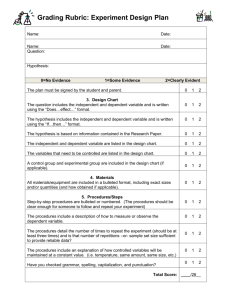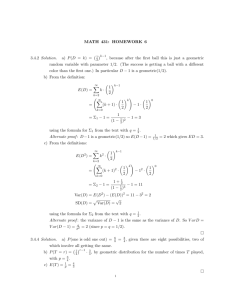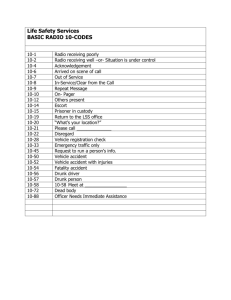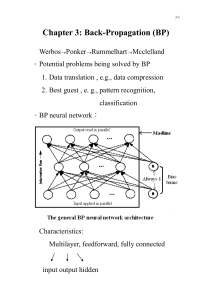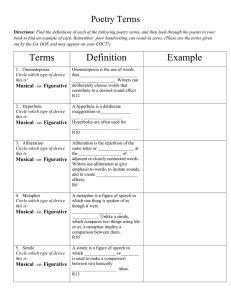ON SUMS OF SQUARES OF PELL-LUCAS NUMBERS Zvonko ˇ Cerin
advertisement
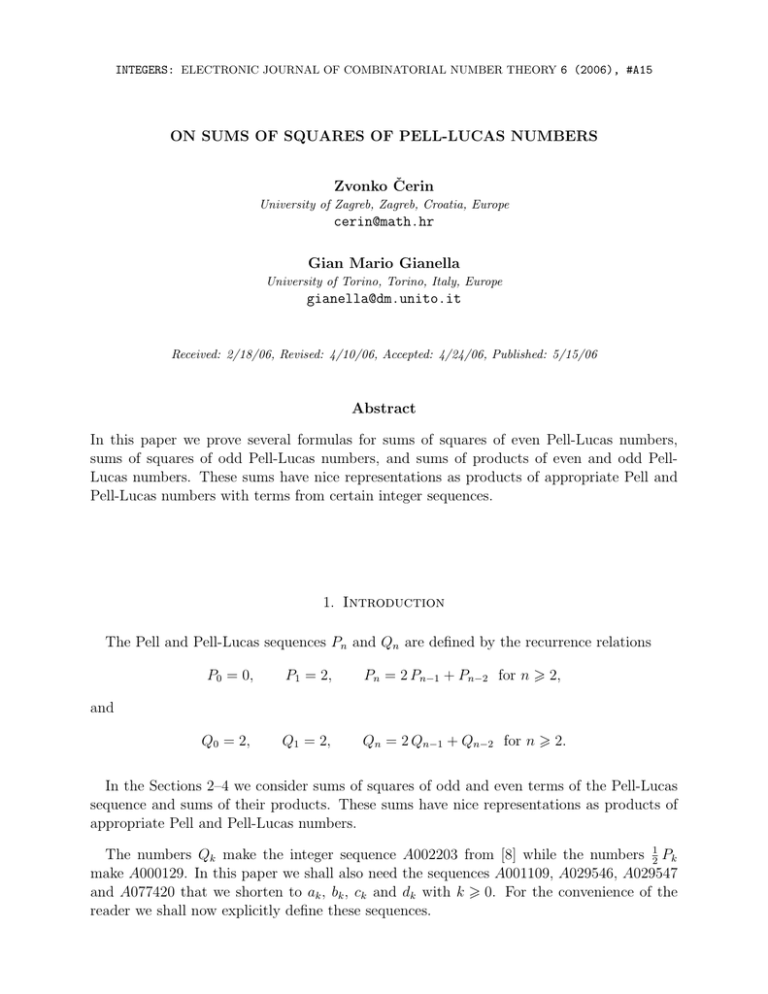
INTEGERS: ELECTRONIC JOURNAL OF COMBINATORIAL NUMBER THEORY 6 (2006), #A15 ON SUMS OF SQUARES OF PELL-LUCAS NUMBERS Zvonko Čerin University of Zagreb, Zagreb, Croatia, Europe cerin@math.hr Gian Mario Gianella University of Torino, Torino, Italy, Europe gianella@dm.unito.it Received: 2/18/06, Revised: 4/10/06, Accepted: 4/24/06, Published: 5/15/06 Abstract In this paper we prove several formulas for sums of squares of even Pell-Lucas numbers, sums of squares of odd Pell-Lucas numbers, and sums of products of even and odd PellLucas numbers. These sums have nice representations as products of appropriate Pell and Pell-Lucas numbers with terms from certain integer sequences. 1. Introduction The Pell and Pell-Lucas sequences Pn and Qn are defined by the recurrence relations P0 = 0, P1 = 2, Pn = 2 Pn−1 + Pn−2 for n ! 2, Q0 = 2, Q1 = 2, Qn = 2 Qn−1 + Qn−2 for n ! 2. and In the Sections 2–4 we consider sums of squares of odd and even terms of the Pell-Lucas sequence and sums of their products. These sums have nice representations as products of appropriate Pell and Pell-Lucas numbers. The numbers Qk make the integer sequence A002203 from [8] while the numbers 12 Pk make A000129. In this paper we shall also need the sequences A001109, A029546, A029547 and A077420 that we shorten to ak , bk , ck and dk with k ! 0. For the convenience of the reader we shall now explicitly define these sequences. 2 INTEGERS: ELECTRONIC JOURNAL OF COMBINATORIAL NUMBER THEORY 6 (2006), #A15 The first ten terms of the sequence ak are 0, 1, 6, 35, 204, 1189, 6930, 40391, 235416 and 1372105, it satisfies the recurrence relations a0 = 0, a = 1 and an = 6 an−1 − an−2 for n ≥ 2, √ √ 1 (3+2 2)n −(3−2 2)n √ and it is given by the formula an = . 4 2 The first seven terms of the sequence bk are 1, 35, 1190, 40426, 1373295, 46651605 and 1584781276, it satisfies the recurrence relations b0 = 1, b1 = 35, b2 = 1190 and bn = 35 (bn−1 − bn−2 ) − bn−3 for n ≥ 3, and it is given by the formula bn = √ and F± = 17 ± 12 2. 1 192 √ (f+ F+n + f− F−n − 6), where f± = 99 ± 70 2 The first seven terms of the sequence ck are 1, 34, 1155, 39236, 1332869, 45278310 and 1538129671, it satisfies the recurrence relations c0 = 1, c1 = 34 and cn = 34 cn−1 − cn−2 for n ≥ 2, and it is given by the formula cn = n+1 n+1 F+ −F− . F+ −F− Finally, the first seven terms of the sequence dk are 1, 33, 1121, 38081, 1293633, 43945441 and 1492851361, it satisfies the recurrence relations√ d0 = 1, d1 √ = 33 and dn = 34 dn−1 − dn−2 3+2 2 3−2 2 n for n ≥ 2, and it is given by the formula dn = 6 F+ + 6 F−n . In the last three sections we look into the alternating sums of squares of odd and even terms of the Pell-Lucas sequence and the alternating sums of products of two consecutive Pell-Lucas numbers. These sums also have nice representations as products of appropriate Pell and Pell-Lucas numbers with terms from the above four integer sequences. These formulas for ordinary sums and for alternating sums have been discovered with the help of a PC computer and all algebraic identities needed for the verification of our theorems can be easily checked in either Derive, Mathematica or Maple V. Running times of all these calculations are in the range of a few seconds. Similar results for Fibonacci and Lucas numbers have recently been discovered by the first author in papers [1], [2], [3], and [4]. They improved some results in [7]. 2. Pell-Lucas even squares The following lemma is needed to accomplish the inductive step in the proof of our first theorem. Lemma 1. For every m ! 0 and k ! 0 the following equality holds: 32 a2m+1 + Q22k+2m+2 + am+1 · Q2k · Q2k+2m = am+2 · Q2k · Q2k+2m+2 . (2.1) √ √ Proof. Let α = 1 + 2 and β = 1 − 2. Notice that α + β = 2 and α · β = −1 so that the real numbers α and β are solutions of the equation x2 − 2 x − 1 = 0. Since Qj = αj + β j INTEGERS: ELECTRONIC JOURNAL OF COMBINATORIAL NUMBER THEORY 6 (2006), #A15 3 and 7α + β 2j−2 α + 7β 2j−2 α + β 16 16 for every j ! 0, the difference of the right hand side√and the left hand side of the relation √ (2.1) (after the substitutions β = − α1 and α = 1 + 2 and the replacement of 99 + 70 2, √ √ √ √ √ 17 + 12 2, 7 + 5 2, 3 + 2 2, 1 + 2, and −1 + 2 with α6 , α4 , α3 , α2 , α and α1 ) is equal √ to 16Mα4 , where M = p0 α4k+4m + p− α4k with p0 = p+ − 9232 − 6528 2 and aj = p± = 3 α8 + 17 α7 + 30 α6 ± 14 α5 − 5 α4 ∓ 3 α3 . √ Since both polynomials p0 and p− contain α − 1 − 2 as a factor we conclude that M = 0 and the proof is complete. Theorem 1. For every m ! 0 and k ! 0 the following equality holds: " m ! Q4 k , if m = 0; Q22k+2i = αm + am+1 · Q2k · Q2k+2m , if m ! 1, i=0 (2.2) 2 where the sequence αm is defined #$ as %follows: α0 = −2, α1 = 32, and αm − αm−1 = 32 · am m 2 for m ! 2 (i. e., αm = 32 · j=1 aj ). Proof. When m = 0 we obtain & & '2 & k '2 '2 − 2 = 0. β Q22k − Q4k − 2 = α2 k + β 2 k − α4 k − β 4 k − 2 = 2 αk For m ! 1 the proof is by induction on m. When m = 1 the relation (2.2) is 32 + Q22k + Q22k+2 − 6 · Q2k · Q2k+2 = 0 which is true since its left hand side is (α2 − 2 α − 1)(α2 + 2 α − 1)(α4k + α−4k−4 − 6 α−2 ). Assume that the relation (2.2) is true for m = r. Then αr+1 + r+1 ! Q22k+2i = 32 a2r+1 + αr + Q22k+2r+2 + i=0 r ! Q22k+2i = i=0 32 a2r+1 + Q22k+2r+2 + ar+1 · Q2k · Q2k+2r = ar+2 · Q2k · Q2k+2r+2 , where the last step uses Lemma 1 for m = r + 1. Hence, (2.2) is true for m = r + 1 and the proof is completed. Remark 1. The following are three additional versions of Theorem 1: For every j ! 0 and k ! 1 the following equalities holds: αj+1 + j ! i=0 j ! i=0 Q22k+2i = aj+1 · Q2k−2 · Q2k+2j+2 , Q22k+2i = γj + aj+1 · Q2k−1 · Q2k+2j+1 , (2.3) (2.4) 4 INTEGERS: ELECTRONIC JOURNAL OF COMBINATORIAL NUMBER THEORY 6 (2006), #A15 j ! i=0 Q22k+2i = δj + aj+1 · Q2k+1 · Q2k+2j−1 , (2.5) where γ0 = δ0 = 8 and γj − γj−1 = 2 · P22j+1 and δj − δj−1 = 2 · P22j−1 for every j ! 1. 3. Pell-Lucas odd squares The initial step in an inductive proof of our second theorem uses the following lemma. Lemma 2. For every k ! 1 the following identity holds: Q22k+1 − Q2k−1 Q2k+3 = 32. (3.1) Proof. By the Binet formula Qn = αn + β n so that we have Q22k+1 − Q2k−1 Q2k+3 = (α2k+1 + β 2k+1 )2 − (α2k−1 + β 2k−1 )(α2k+3 + β 2k+3 ) = 2 (α · β)2 k+1 − (α · β)2 k−1 (α4 + β 4 ) = −2 + Q4 = −2 + 34 = 32. The following lemma is needed to accomplish the inductive step in the proof of our second theorem. Lemma 3. For every j ! 0 and k ! 1 the following equality holds: Q22k+2j+3 + Q2k−1 (aj+1 Q2k+2j+3 − aj+2 Q2k+2j+5 ) = 32 a2j+2 . (3.2) Proof. The difference of the left√hand side and the right hand side √ of (3.2) (after √ the sub√ 1 stitutions β = − α and α = 1 + 2 and the replacement of 99 + 70 2, 17 + 12 2, 7 + 5 2, √ √ √ 3 + 2 2, 1 + 2, and −1 + 2 with α6 , α4 , α3 , α2 , α and α1 ) is equal to 16Mα8 , where M = p0 α4k+4j + p− α4k √ with p0 = p+ − 1827888 − 1292512 2 and p± = 3 α14 ± 17 α13 + 30 α12 ± 14 α11 − 5 α10 ∓ 3 α9 . √ Since both polynomials p0 and p− contain α − 1 − 2 as a factor we conclude that M = 0 and the proof is complete. Theorem 2. For every j ! 0 and k ! 1 the following equality holds: j ! i=0 Q22k+2i+1 = αj+1 + aj+1 · Q2k−1 · Q2k+2j+3 . (3.3) INTEGERS: ELECTRONIC JOURNAL OF COMBINATORIAL NUMBER THEORY 6 (2006), #A15 5 Proof. The proof is by induction on j. For j = 0 the relation (3.3) is Q22k+1 = 32 + Q2k−1 Q2k+3 which is true by the relation (3.1) in Lemma 2. Assume that the relation (3.3) is true for j = r. Then r+1 ! Q22k+2i+1 = Q22k+2r+3 + i=0 r ! Q2k+2i+1 = i=0 Q22k+2r+3 + αr+1 + ar+1 · Q2k−1 · Q2k+2r+3 = αr+1 + 32 a2r+2 + ar+2 · Q2k−1 · Q2k+2r+5 = α(r+1)+1 + ar+2 · Q2k−1 · Q2k+2(r+1)+3 , where the third step uses Lemma 3. Hence, (3.3) is true also for j = r + 1 and the proof is complete. Another version of Theorem 2 is the following statement: Theorem 3. For every j ! 0 and k ! 1 the following equality holds: βj + j ! i=0 Q22k+2i+1 = aj+1 · Q2k−2 · Q2k+2j+4 , (3.4) 2 for j ! 1. with β0 = 200 and βj − βj−1 = 2 · P2j+3 Proof. We shall only outline the key steps in an inductive proof leaving the details to the reader because they are analogous to the proof of Theorem 2. The initial step is the equality 200 + Q22k+1 = Q2k−2 Q2k+4 which holds for every k ! 1. On the other hand, the inductive step is realized with the following equality: 2 2 P2r+5 + Q22k+2r+3 + ar+1 Q2k−2 Q2k+2r+4 = ar+2 Q2k−2 Q2k+2r+6 , which holds for every k ! 1 and every r ! 1. 4. Pell-Lucas products For the first two steps in a proof by induction of our next theorem we require the following lemma. Lemma 4. For every k ! 1 the following equalities hold: Q2k Q2k+1 = Q4k+1 + 2. Q2k Q2k+1 + Q2k+2 Q2k+3 = 6 Q2k Q2k+3 − 80. (4.1) (4.2) 6 INTEGERS: ELECTRONIC JOURNAL OF COMBINATORIAL NUMBER THEORY 6 (2006), #A15 Proof of (4.1). By the Binet formula we have & '& ' Q2k Q2k+1 = α2k + β 2k α2k+1 + β 2k+1 = α4k+1 + (α · β)2k (α + β) + β 4k+1 = Q4k+1 + 2. Proof of (4.2). When we apply the Binet formula to the terms in the difference of the left hand side and the right hand side of (4.2) we get 80 + α4 k+1 + α (α β)2 k + β (α β)2 k + β 4 k+1 + α4 k+5 + α3 β 2 (α β)2 k + β 3 α2 (α β)2 k + β 4 k+5 − 6α4 k+3 − 6α3 (α β)2 k − 6β 3 (α β)2 k − 6β 4 k+3 . Since α β = −1, this simplifies to p(α) α4k + p(β) β 4k + q, where p(x) = x5 − 6 x3 + x and 3 q = α3√ β 2 + α2 β 3 − 6 α√ − 6 β 3 + α + β + 80. Now it is easy to check (by the substitutions α = 1 + 2 and β = 1 − 2) that p(α) = 0, p(β) = 0 and q = 0. This implies that the relation (4.2) holds. With the following lemma we shall make the inductive step in the proof of the third theorem. Lemma 5. For every r ! 1 and k ! 1 the following equality holds: Q2k (ar+2 Q2k+2r+3 − ar+1 Q2k+2r+1 ) − Q2k+2r+2 Q2k+2r+3 = 2 P2r+2 P2r+3 . Proof. Let R denote the difference of the left hand side and the right hand side of the above relation. We need to show that R = 0. Let A = α2k , B = β 2k , U = β 2r , V = β 2r , u = 7α+β and v = α+7β . Note that ar+1 is equal 16 16 to u U + v V . By the Binet formula we get ( R = (A + B) (u α2 U + v β 2 V )(α3 A U + β 3 B V ) − (u U + v V ) (α A U + β B V )] − (α2 A U + β 2 B V )(α3 A U + β 3 B V ) − * ) (8 u − m) A2 − m 2 2 3 3 U2 (α U + β V )(α U + β V ) = %+ u A B + 8 − 2 (A B − 1) U V + (%− v A B − n) V 2 , √ √ √ where %± = 4(10 ± 7 2), m = 4 + 3 2 and n = 41 − 29 2. Since A B = 1, u = m8 and %− v = n it follows that R = 0. Theorem 4. For every j ! 0 and k ! 1 the following equality holds: " j ! Q4 k , if j = 0; αj + Q2k+2i · Q2k+2i+1 = aj+1 · Q2k · Q2k+2j+1 , if j ! 1, i=0 where α0 = −2, α1 = 80, and αj+1 − αj = 2 · P2j+2 · P2j+3 for j ! 1. (4.3) INTEGERS: ELECTRONIC JOURNAL OF COMBINATORIAL NUMBER THEORY 6 (2006), #A15 7 Proof. The proof is by induction on j. For j = 0 the relation (4.3) is Q2k Q2k+1 − 2 = Q4k+1 which is true by (4.1). For j = 1 the relation (4.3) is 80 + Q2k Q2k+1 + Q2k+2 Q2k+3 = 6 Q2k Q2k+3 which is true by (4.2). Assume that the relation (4.3) is true for j = r. Then αr+1 + r+1 ! Q2k+2i Q2k+2i+1 = αr + 2 P2r+2 P2r+3 i=0 + r ! Q2k+2i Q2k+2i+1 + Q2k+2r+2 Q2k+2r+3 = ar+1 Q2k Q2k+2r+1 i=0 + 2 P2r+2 P2r+3 + Q2k+2r+2 Q2k+2r+3 = ar+2 Q2k Q2k+2(r+1)+1 , where the last step uses Lemma 5. Hence, (4.3) is true also for j = r + 1. 5. Alternating Pell-Lucas even squares In this section we look for formulas that give closed forms for alternating sums of squares of Pell-Lucas numbers with even indices. Lemma 6. For every k ! 0 we have Q22k = 8 + Q2k+1 · Q2k−1 . (5.1) Proof. By the Binet formula we get 8 + Q2k−1 Q2k+1 = 8 + (α2k−1 + β 2k−1 )(α2k+1 + β 2k+1 ) = 8 + α4k + β 2 (α β)2k−1 + α2 (α β)2k−1 + β 4k = α4k + 2 + β 4k = (α2k + β 2k )2 = Q22k . Lemma 7. For every k ! 0 we have Q22k − Q22k+2 = 32 · (1 − ak+1 Q2k ). (5.2) a a α −β a a Proof. For real numbers a, b and c let pab , qa and ra;b c denote αb −β b , α + β and difference of the left hand side and the right hand side in (5.2) is ' & 2k 2k q2k . + r1;7 (q2k )2 − (q2k+2 )2 − 32 + 32 r7;1 16 α 16 β Let α2k = A and β 2k = B. The above expression reduces to p(α) A2 + q A B + p(β) B 2 − 32, a α+b β . c The INTEGERS: ELECTRONIC JOURNAL OF COMBINATORIAL NUMBER THEORY 6 (2006), #A15 8 where p(α) √ = 1 + 14 α +√ 2 β − α4 and q = 2 + 16 α + 16 β − 2 α2 β 2 . If we replace α and β with 1 + 2 and 1 − 2 we get p(α) = p(β) = 0 and q = 32. Hence, the difference is 32 A B − 32 = 0 because A B = 1. Lemma 8. For every k ! 0 and every r ! 0 we have 32 · cr · (1 − ak+r+1 Q2k+2r ) + Q22k+4r+4 − Q22k+4r+6 (5.3) = 32 · cr+1 · (1 − ak+r+2 Q2k+2r+2 ). Proof. Notice that cr = p44r+4 for every r ! 0. The difference of the left hand side and the right hand side in (5.3) is ( & ' + 2k+2r 2k+2r + r1;7 1 − r7;1 q2k+2r + (q2k+4r+4 )2 − 32 · p4r+4 16 α 16 β 4 ( & ' + 2k+2r+2 2k+2r+2 (q2k+4r+6 )2 − 32 · p4r+8 + r1;7 1 − r7;1 q2k+2r+2 . 16 α 16 β 4 Let α2k = A, β 2k = B, α2r = U and β 2r = V . The above expression reduces to where M is M , α4 −β 4 p(α, β) A2 U 4 − q(α, β) A2 U 2 V 2 + r(α, β) A B U 3 V + 2 s A B U 2 V 2 − p(β, α)B 2 V 4 + q(β, α)B 2 U 2 V 2 − r(β, α)A B U V 3 − 32(t(α)U 2 − t(β)V 2 ), where p(α, β) = t(α)(α4 β 4 − α8 + 14 α5 + 2 α4 β + 14 α + 2 β), q(α, β) = 2 β 4 (7 α + β)(α4 β 4 − 1), r(α, β) = 16 α4 (α + β)(α6 β 2 − 1), s =√ α4 β 4 (α4 − β 4 )(α2 β 2 − 1) and t(α) = α4 (α4 − 1). Replacing α and β with 1 + 1 − 2 we get √ 2 and M = u + A B U 3 V − u− A B U V 3 − u+ U 2 + u − V 2 , √ where u± = 128(140 ± 99 2). Hence, M = 0 so that the difference is zero because A B = 1 and U V = 1. Lemma 9. For every k ! 0 and every r ! 0 we have dr · Q22k+2r − 64 br−1 − Q22k+4r+2 + Q22k+4r+4 = dr+1 · Q22k+2r+2 − 64 br . Proof. Notice that α4r + r29;169 β 4r − br = r169;29 384 384 and 1;5 4r 4r dr = r5;1 12 α + r12 β , 1 32 INTEGERS: ELECTRONIC JOURNAL OF COMBINATORIAL NUMBER THEORY 6 (2006), #A15 9 for every r ! 0. The difference of the left hand side and the right hand side is ' & 5;1 4r 4r (q2k+2r )2 − r169;29 α4r−4 − r29;169 β 4r−4 − (q2k+4r+2 )2 + r12 α + r1;5 12 β 6 6 ' & 4r+4 4r+4 (q2k+4r+4 )2 − r5;1 · (q2k+2r+2 )2 + r169;29 + r1;5 α4r − r29;169 β 4r . 12 α 12 β 6 6 Let α2k = A, β 2k = B, α2r = U and β 2r = V . The above expression reduces to where M is −M , 12 α4 β 4 p(α, β)A2 U 4 + q(α, β)(AU V )2 + r(α, β)ABU 3 V − 24 s AB(U V )2 + p(β, α)B 2 V 4 + q(β, α)(BU V )2 + r(β, α)ABU V 3 − t(α, β)U 2 − t(β, α)V 2 , with P = (α β)4 , p(α, β) = P (α4 − 1)(5 α5 + α4 β − 12 α4 + 5 α + β), q(α, β) = P (P − 1)(α + 5 β), r(α, β) = 2 P (α6 β 2 − 1)(5 α + β), s = P (P√− α2 β 2 ) and t(α, β) = 2 (P − β 4 )(169 α + 29 β). Replacing α and β with 1 + and 1 − 2 we get √ 2 M = u+ A B U 3 V + u − A B U V 3 − u+ U 2 − u− V 2 , √ where u± = 16(24 ± 17 2). Hence, M = 0 so that the difference is zero because A B = 1 and U V = 1. Theorem 5. a) For every m ! 0 and k ! 0 the following equality holds: 2! m+1 i=0 (−1)i · Q22k+2i = 32 · cm · (1 − ak+m+1 · Q2k+2m ), (5.4) b) For every m ! 1 and k ! 0 the following equality holds: 2m ! i=0 (−1)i · Q22k+2i = dm · Q22k+2m − 64 · bm−1 . (5.5) Proof of a). The proof is by induction on m. For m = 0 the relation (5.4) is Q22k − Q22k+2 = 32 · (1 − ak+1 Q2k ) (i. e., the relation (5.2)) which is true by Lemma 7. Assume that the relation (5.4) is true for m = r. Then 2(r+1)+1 ! i=0 i (−1) · Q22k+2i = 2r+1 ! i=0 (−1)i · Q22k+2i + Q22k+4r+4 − Q22k+4r+6 = 32 · cr · (1 − ak+r+1 · Q2k+2r ) + Q22k+4r+4 − Q22k+4r+6 = 32 · cr+1 · (1 − ak+(r+1)+1 · Q2k+2(r+1) ), INTEGERS: ELECTRONIC JOURNAL OF COMBINATORIAL NUMBER THEORY 6 (2006), #A15 10 where the last step uses Lemma 8. Hence, (5.4) is true for m = r + 1 and the proof is completed. Proof of b). The proof is by induction on m. For m = 0 the relation (5.5) is Q22k = d0 Q22k − 64 b−1 which is true since d0 = 1 and b−1 = 0. Assume that the relation (5.5) is true for m = r. Then 2(r+1) ! i=0 i (−1) · Q22k+2i = 2r ! i=0 (−1)i · Q22k+2i − Q22k+4r+2 + Q22k+4r+4 = dr · Q22k+2r − 64 br−1 − Q22k+4r+2 + Q22k+4r+6 = dr+1 · Q22k+2r+2 − 64 br , where the last step uses Lemma 9. Hence, (5.5) is true for m = r + 1 and the proof is completed. 6. Alternating Pell-Lucas odd squares Lemma 10. For every k ! 0 we have Q22k+3 − Q22k+1 = 32 · ak+1 · Q2k+2 . (6.1) Proof. By the Binet formulas the difference of the left hand side and the right hand side in (6.1) is Q22k+3 − Q22k+1 − 32 ak+1 Q2k+2 = (α2k+1 + β 2k+1 )2 − (α2k+3 + β 2k+3 )2 , 7α + β 2k α + 7β 2k α + β + 32 (α2k+2 + β 2k+2 ), 16 16 Let α2k = A and β 2k = B. The above expression reduces to p(α)A2 − q A B + p(β)B 2 , 2 4 where q = 2 α3 β 3 − 2 α β − 2 α3 − 14 β 2 α − 14√ α2 β − 2 β 3 and p(α) √ = α (14α − α + 2β + 1). It is easy to check (by substitutions α = 1 + 2 and β = 1 − 2) that p(α) = 0, p(β) = 0 and q = 0. This implies that the relation (6.1) is true. Lemma 11. For every k ! 0 we have 8 + Q22k+1 = Q2k · Q2k+2 . (6.2) Proof. Using the Binet representation of Pell-Lucas numbers we get 8 + Q22k+1 − Q2k Q2k+2 = 8 + (α2k+1 + β 2k+1 )2 − (α2k + β 2k )(α2k+2 + β 2k+2 ) = 8 + 2 (α β)2k+1 − (α β)2k (α2 + β 2 ) = 8 − 2 − 6 = 0, INTEGERS: ELECTRONIC JOURNAL OF COMBINATORIAL NUMBER THEORY 6 (2006), #A15 11 because α β = −1 and α2 + β 2 = 6. Hence, 8 + Q22k+1 = Q2k Q2k+2 . Lemma 12. For all k ! 0 and r ! 0 we have L = 0, where L is Q22k+4r+5 − Q22k+4r+7 − 32 cr · ak+r+1 · Q2k+2r+2 + 32 cr+1 · ak+r+2 · Q2k+2r+4 . Proof. The expression L is in fact & 7;1 2k+2r ' 2k+2r + r1;7 r16 α q2k+2r+2 (q2k+4r+5 )2 − (q2k+4r+7 )2 − 32 p4r+4 16 β 4 & ' 2k+2r+2 2k+2r+2 q2k+2r+4 . + 32 p44r+8 r7;1 + r1;7 16 α 16 β Let α2k = A, β 2k = B, α2r = U and β 2r = V . The above expression reduces to where M is M , α4 −β 4 p(α, β)A2 U 4 + 2 q(α, β)(AU V )2 + 2 r(α, β)ABU 3 V − 2 s AB(U V )2 − p(β, α)B 2 V 4 + 2 q(β, α)(BU V )2 − 2 r(β, α)ABU V 3 , with p(α, β) = α6 (α4 − 1)(α4 β 4 − α8 + 14 α5 + 2 α4 β + 14 α + 2 β), q(α, β) = α2 β 4 ((αβ)4 − 1)(7α + β), r(α, β) = α4 (α + β)(α6 β 2 − 1)(α2 + 6αβ + β 2 ) √ √ and s = α5 β 5 ((αβ)2 − 1)(α4 − β 4 ). Replacing α and β with 1 + 2 and 1 − 2 we see easily that all coefficients of the above polynomial vanish so that L = 0. Lemma 13. For every k ! 0 and every r ! 0 we have 2 2 − P2r+1 ) + dr · Q2k+2r · Q2k+2r+2 2(P2r+3 − Q22k+4r+3 + Q22k+4r+5 = dr+1 · Q2k+2r+2 · Q2k+2r+4 . Proof. The difference of the left hand side and the right hand side is .& '2 & 2r+1 '2 / & 5;1 4r ' 4r 8 p2r+3 + r12 α + r1;5 − p1 q2k+2r q2k+2r+2 − 12 β 1 & ' 4r+4 4r+4 + r1;5 q2k+2r+2 q2k+2r+4 . (q2k+4r+3 )2 + (q2k+4r+5 )2 − r5;1 12 α 12 β −M Let α2k = A, β 2k = B, α2r = U and β 2r = V . The above expression reduces to 12 (α−β) 2, where M is ( (α − β)2 p(α, β)A2 U 4 + q(α, β)(AU V )2 + r(α, β)ABU 3 V − + 24 s AB(U V )2 + p(β, α)B 2 V 4 + q(β, α)(BU V )2 + r(β, α)ABU V 3 + ( − 96 t(α)U 2 − 2wU V + t(β)V 2 , with t(α) = α2 (α4 − 1), p(α, β) = t(α)(5 α5 + α4 β − 12 α4 + 5 α + β), INTEGERS: ELECTRONIC JOURNAL OF COMBINATORIAL NUMBER THEORY 6 (2006), #A15 12 q(α, β) = t(αβ)(α + 5 β)/β 2 , r(α, β) = (α2 + β 2 )(α6 β 2 − 1)(5 α + β), s = α3 β 3 ((αβ)2 − 1) and w = αβ((αβ)2 − 1). Replacing α and β with 1 + we get √ 2 and 1 − √ 2 M = u + A B U 3 V + u − A B U V 3 − u+ U 2 − u− V 2 , √ where u± = 384(24 ± 17 2). Hence, M = 0 so that the difference is zero since A B = 1 and U V = 1. Theorem 6. a) For every j ! 0 and k ! 0 the following equality holds: 2 j+1 ! i=0 (−1)i · Q22k+2i+1 = −32 · cj · ak+j+1 · Q2k+2j+2 , (6.3) b) For every j ! 1 and k ! 1 the following equality holds: 2· 2 P2j+1 + 2j ! i=0 (−1)i · Q22k+2i+1 = dj · Q2k+2j · Q2k+2j+2 . (6.4) Proof of a). The proof is by induction on j. For j = 0 the relation (6.3) is Q22k+3 − Q22k+1 = 32ak+1 Q2k+2 (i. e., the relation (6.1)) which is true by Lemma 10. Assume that the relation (6.3) is true for j = r. Then 2(r+1)+1 ! i=0 i (−1) Q22k+2i+1 = 2r+1 ! i=0 (−1)i Q22k+2i+1 + Q22k+4r+5 − Q22k+4r+7 = −32 cr ak+r+1 Q2k+2r+2 + Q22k+4r+5 − Q22k+4r+7 = −32 cr+1 ak+r+2 Q2k+2r+4 , where the last step uses Lemma 12. Hence, (6.3) is true for j = r + 1 and the proof is completed. Proof of b). The proof is again by induction on j. For j = 0 the relation (6.4) is 2 P12 + Q22k+1 = d0 Q2k Q2k+2 which is true by Lemma 11 since d0 = 1 and P1 = 2. INTEGERS: ELECTRONIC JOURNAL OF COMBINATORIAL NUMBER THEORY 6 (2006), #A15 13 Assume that the relation (6.4) is true for j = r. Then 2(r+1) 2 2 P2r+3 + ! i=0 2 2 (−1)i Q22k+2i+1 = 2(P2r+3 − P2r+1 ) + 0 2 + 2 P2r+1 2 2(P2r+3 − 2r ! (−1)i Q22k+2i+1 i=0 2 P2r+1 ) + 1 − Q22k+4r+3 + Q22k+4r+5 = dr Q2k+2r Q2k+2r+2 − Q22k+4r+3 + Q22k+4r+5 = dr+1 Q2k+2r+2 Q2k+2r+4 , where the last step uses Lemma 13. Hence, (6.4) is true for m = r + 1 and the proof is completed. 7. Alternating Pell-Lucas products Lemma 14. For every k ! 0 we have Q2k Q2k+1 − Q2k+2 Q2k+3 + 8 P2k+3 Q2k = 80. (7.1) Proof. The difference of the left hand side and the right hand side in (7.1) is q2k q2k+1 − q2k+2 q2k+3 + 16 p2k+3 q2k − 80. 1 Let α2k = A and β 2k = B. The above expression reduces to M α−β where M is p(α) A2 − q A B − p(β) B 2 − 80(α − β), with p(α) = α(β α4 − α5 + 16 α2 + α − β) and q = (α − β)(α3 β 2 + α2 β 3 − 16 α2 − 16 α β − 16 β 2 − α − β). √ √ √ If we replace α and β√ with 1 + 2 and 1 − 2 we get p(α) = p(β) = 0 and q = −160 2 and 80(α − β) = 160 2. Hence, M = 0 because A B = 1. Lemma 15. For all k ! 0 and r ! 0 we have 8 cr+1 · (P2k+2r+5 · Q2k+2r+2 − 10) + Q2k+4r+4 · Q2k+4r+5 = 8 cr · (P2k+2r+3 · Q2k+2r − 10) + Q2k+4r+6 · Q2k+4r+7 . Proof. The difference L of the left hand side and the right hand side is ( 2k+2r+5 + 8 p4r+8 2 p1 q2k+2r+2 − 10 + q2k+4r+4 q2k+4r+5 4 + ( − q2k+4r+6 q2k+4r+7 − 8 p44r+4 2 p2k+2r+3 q2k+2r − 10 1 Let α2k = A, β 2k = B, α2r = U and β 2r = V . The above expression reduces to M , (α + β)(α − β)2 (α2 + β 2 ) INTEGERS: ELECTRONIC JOURNAL OF COMBINATORIAL NUMBER THEORY 6 (2006), #A15 14 where M is p(α, β)A2 U 4 − 16 q(α, β)(AU V )2 + 16 r(α, β)ABU 3 V − s AB(U V )2 + p(β, α)B 2 V 4 − 16 q(β, α)(BU V )2 − 16 r(β, α)ABU V 3 − t(α)U 2 + t(β)V 2 , with p(α, β) = α6 (α4 − 1)(α6 β − α7 + α3 β 4 − α2 β 5 + 16 α4 + 16), q(α, β) = α3 β 4 ((αβ)4 − 1), s = α4 β 4 ((αβ)2 − 1)(α2 + β 2 )(α2 − β 2 )2 , r(α, β) = α4 (α − β)(α6 β 2 − 1)(α2 + αβ + β 2 ) √ √ and t(α) = 80 α4 (α − β) (α4 − 1). Replacing α and β with 1 + 2 and 1 − 2 we get M = u+ A B U 3 V + u − A B U V 3 − u+ U 2 − u− V 2 , √ where u± = 1280(99 ± 70 2). Hence, M = 0 so that the difference is zero since A B = 1 and U V = 1. Lemma 16. For all k ! 0 and r ! 0 we have 64 cr + dr · Q2k+2r · Q2k+2r+1 + Q2k+4r+4 · Q2k+4r+5 = dr+1 · Q2k+2r+2 · Q2k+2r+3 + Q2k+4r+2 · Q2k+4r+3 . Proof. The difference L of the left hand side and the right hand side is & ' 1;5 4r 4r 64 p4r+4 + r5;1 q2k+2r q2k+2r+1 − q2k+4r+2 q2k+4r+3 12 α + r12 β 4 & ' 4r+4 4r+4 + q2k+4r+4 q2k+4r+5 − r5;1 + r1;5 q2k+2r+2 q2k+2r+3 . 12 α 12 β Let α2k = A, β 2k = B, α2r = U and β 2r = V . The above expression reduces to where M is p(α, β)A2 U 4 − q(α, β)(AU V )2 + r(α, β)ABU 3 V + 12 s AB(U V )2 − M , 12(α4 −β 4 ) p(β, α)B 2 V 4 − q(β, α)(BU V )2 − r(β, α)ABU V 3 + t(α)U 2 − t(β)V 2 , with p(α, β) = α (α4 − 1)(β 4 − α4 )(5α5 + α4 β − 12α4 + 5 α + β), s = α2 β 2 ((αβ)2 − 1)(β 4 − α4 )(α + β), r(α, β) = (β 4 − α4 )(α + β)(5α + β)(α6 β 2 − 1), q(α, β) = α((αβ)4 − 1)(β 4 − α4 )(α + 5β) √ √ and t(α) = 768 α4 . Replacing α and β with 1 + 2 and 1 − 2 we get M = −u+ A B U 3 V + u− A B U V 3 + u+ U 2 − u− V 2 , INTEGERS: ELECTRONIC JOURNAL OF COMBINATORIAL NUMBER THEORY 6 (2006), #A15 15 √ where u± = 768(17 ± 12 2). Hence, M = 0 so that the difference is zero since A B = 1 and U V = 1. Theorem 7. a) For every j ! 0 and k ! 0 the following equality holds: 2 j+1 ! (−1)i ·Q2k+2i ·Q2k+2i+1 = −8·cj ·(P2k+2j+3 ·Q2k+2j −10), i=0 (7.2) b) For every j ! 0 and k ! 0 the following equality holds: βj + 2j ! i=0 (−1)i · Q2k+2i · Q2k+2i+1 = dj · Q2k+2j · Q2k+2j+1 , (7.3) where the sequence βj is determined by the conditions: β0 = 0 and βj+1 = βj + 64 · cj for every j ! 0. Proof of a). The proof is by induction on j. For j = 0 the relation (7.2) is Q2k Q2k+1 − Q2k+2 Q2k+3 = −8 P2k+3 Q2k + 80 (i. e., the relation (7.1)) which is true by Lemma 14. Assume that the relation (7.2) is true for j = r. Then 2(r+1)+1 ! i (−1) Q2k+2i Q2k+2i+1 = i=0 2r+1 ! (−1)i Q2k+2i Q2k+2i+1 + i=0 Q2k+4r+4 Q2k+4r+5 − Q2k+4r+6 Q2k+4r+7 = −8cr (P2k+2r+3 Q2k+2r − 10) + Q2k+4r+4 Q2k+4r+5 − Q2k+4r+6 Q2k+4r+7 = −8cr+1 (P2k+2r+5 Q2k+2r+2 − 10), where the last step uses Lemma 15. Hence, (7.2) is true for j = r + 1 and the proof is completed. Proof of b). The proof is once again by induction on j. For j = 0 the relation (7.3) is β0 + Q2k Q2k+1 = d0 Q2k Q2k+1 which is true since d0 = 1 and β0 = 0. Assume that the relation (7.3) is true for j = r. Then 2(r+1) βr+1 + ! i=0 (−1)i Q2k+2i Q2k+2i+1 = βr+1 − βr + βr + 2r ! i=0 (−1)i Q2k+2i Q2k+2i+1 − Q2k+4r+2 Q2k+4r+3 + Q2k+4r+4 Q2k+4r+5 = 64 cr + dr Q2k+2r Q2k+2r+1 − Q2k+4r+2 Q2k+4r+3 + Q2k+4r+4 Q2k+4r+5 = dr+1 Q2k+2r+2 Q2k+2r+3 , where the last step uses Lemma 16. Hence, (7.3) is true for j = r + 1 and the proof is completed. 16 INTEGERS: ELECTRONIC JOURNAL OF COMBINATORIAL NUMBER THEORY 6 (2006), #A15 We mention also the following equalities that have been discovered while attempting to prove Theorem 7. Theorem 8. For every k ! 0 we have Q2k · Q2k+1 = Q2k+3 · Q2k−2 − 80 = 2 · (P2k+2 · P2k−1 − 6). References [1] Z. Čerin, Properties of odd and even terms of the Fibonacci sequence, Demonstratio Mathematica, 39 (1) (2006), 55–60. [2] Z. Čerin, On sums of squares of odd and even terms of the Lucas sequence, Proccedings of the 11th Fibonacci Conference, (to appear). [3] Z. Čerin, Some alternating sums of Lucas numbers, Central European Journal of Mathematics 3 (1) (2005), 1 – 13. [4] Z. Čerin, Alternating Sums of Fibonacci Products, (preprint). [5] V. E. Hoggatt, Jr., Fibonacci and Lucas numbers, The Fibonacci Association, Santa Clara, 1969. [6] R. Knott, Fibonacci numbers and the Golden Section, http://www.mcs.surrey.ac.uk/Personal/R.Knott/Fibonacci/fib.html. [7] V. Rajesh and G. Leversha, Some properties of odd terms of the Fibonacci sequence, Mathematical Gazette, 88 (2004), 85–86. [8] N. J. A. Sloane, On-Line Encyclopedia of Integer Sequences, http://www.research.att.com/~njas/sequences/. [9] S. Vajda, Fibonacci and Lucas numbers, and the Golden Section: Theory and Applications, Halsted Press, Chichester (1989).

